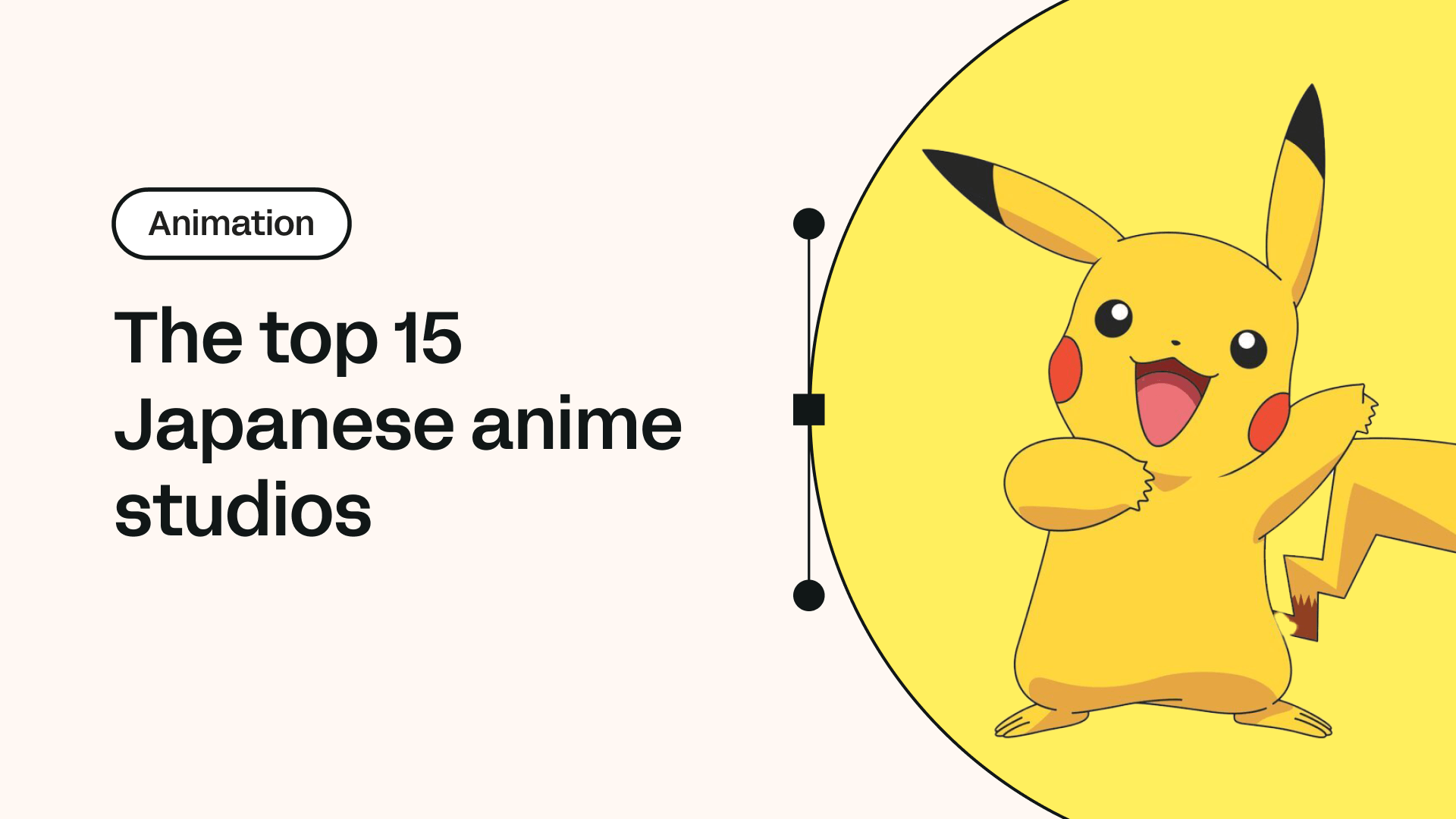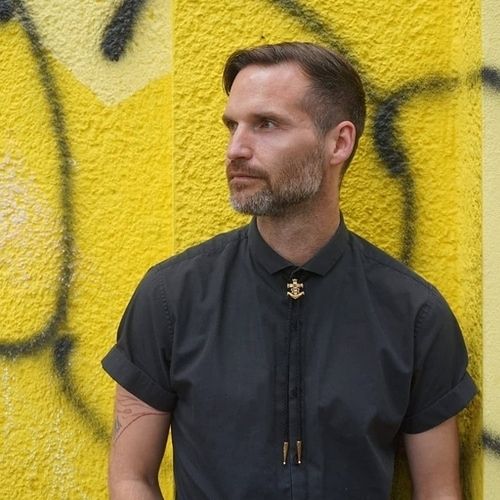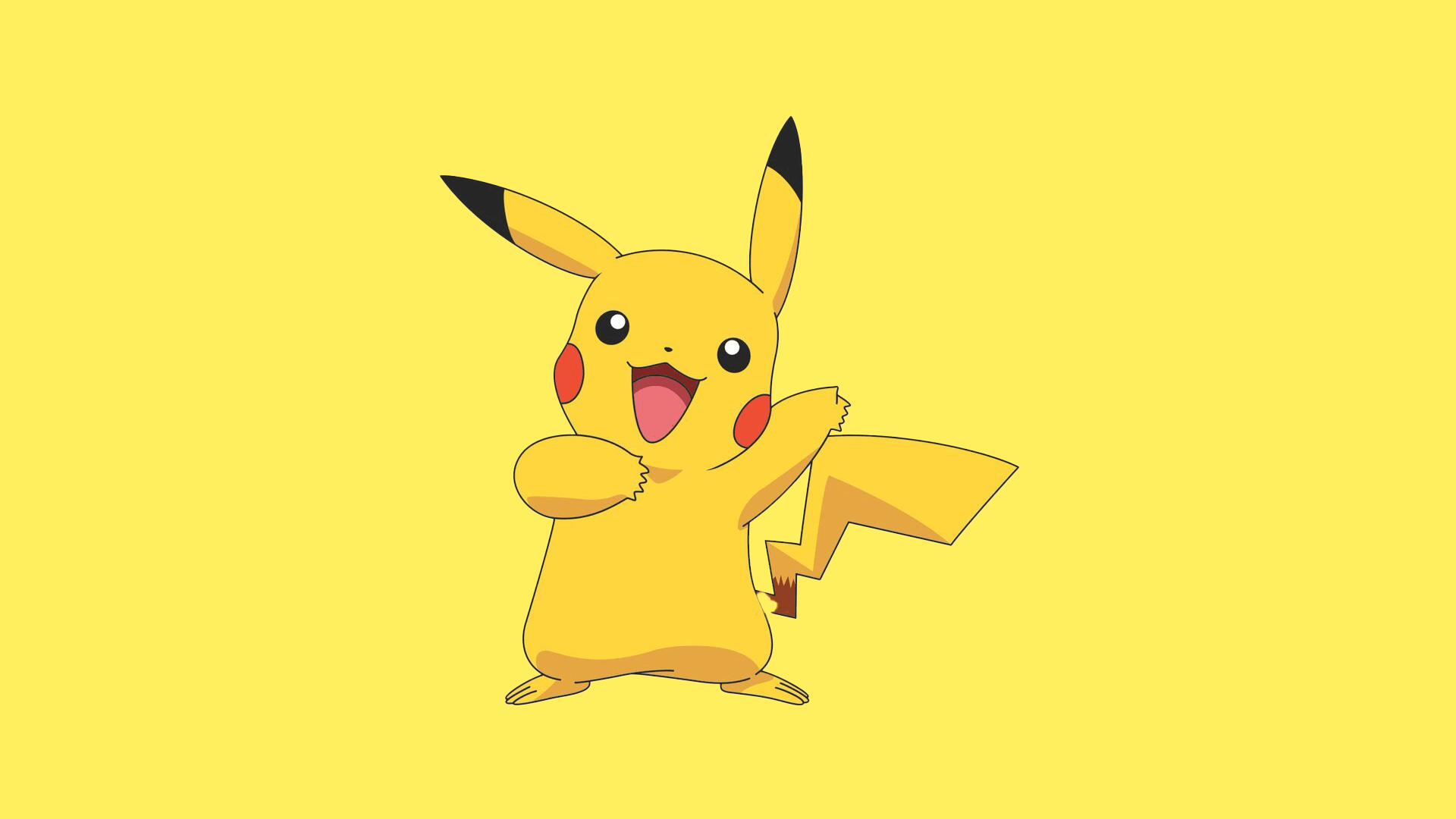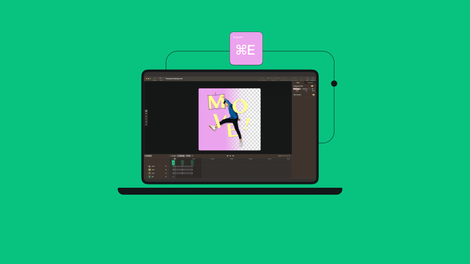The Japanese animation industry, renowned as anime, is a colossal force within the entertainment realm.
Even for those not particularly drawn to anime, its phenomenal success is undeniable, having permeated the mainstream culture on a global scale.
Famous anime series such as Dragon Ball Z have embedded themselves into pop culture. At the same time, critically acclaimed films like Spirited Away have positioned themselves amongst the greatest cinematic works of all time.
Japanese studios, the beating heart of this industry, craft original anime series and successful productions at an astonishing rate.
These studios function not merely as production houses but as full-fledged Japanese entertainment companies.
Among these, you'll find names that have stretched their influence beyond their home country, partnering with global giants like Universal Pictures to expand their reach.
These alliances bridge the gap between traditional Japanese comics and their animated counterparts, thus contributing to the evolution of the industry.
Join us as we explore some of these groundbreaking studios, whose key animators work tirelessly behind the scenes to breathe life into your favorite series, contributing to the continued growth of the anime market.
Jumpstart your ideas with Linearity Curve
Take your designs to the next level.
Madhouse
Founded in 1972, Madhouse Studio is one of the longest-running Japanese anime studios.
It was started by four very talented animators – Osamu Dezaki, Rintaro, Yoshiaki Kawajiri and Masao Maruyama – who were all previously working at Osamu Tezuka’s Mushi Production Studio.
Right from the beginning Madhouse were producing incredible series and films, and that trend continues to this day. Notable Madhouse productions include Death Note, One-Punch Man, Claymore, and Cardcaptor Sakura.
Madhouse has a reputation for bringing on board stellar directors, with one standout example being Satoshi Kon.
Madhouse was the anime studio responsible for all four of Kon’s highly acclaimed films – Perfect Blue, Paprika, Millennium Actress, and Tokyo Godfathers.
Madhouse is also known for attracting well-known manga artists, such as Clamp and Naoki Urasawa.As well as collaborating with other Japanese animation studios, Madhouse also collaborates with international studios. For example, it worked with Marvel on various animation series like X-Men and Wolverine.
Ready to create brand assets that pack a punch?
Visit our Academy for free marketing design courses.
Studio Bones
Like several other studios on this list, Studio Bones was founded by members of a former studio. In this case, the former studio was Sunrise Inc., and the former members were Masahiko Minami, Hiroshi Osaka and Toshihiro Kawamoto.
They broke away and started Studio Bones in 1998, and have since been behind some hit anime series, such as Full Metal Alchemist, Mob Psycho 100 and My Hero Academia.
There was no bad blood between Studio Bones and Sunrise Inc., and the studios would go on to collaborate with each other on 2001’s Cowboy Bebop: The Movie.
Tragically, founding member Hiroshi Osaka passed away from cancer in 2007 at the age of 44.
After this, Makoto Watanabe and Takahiro Komori were brought on to the board of directors. Studio Bones has a reputation as a reliable studio that is capable of handling any kind of job.
Kyoto Animation
Founded way back in 1981, Kyoto Animation is another long-running animation studio with a rich history.
It was founded by a married couple, Yoko and Hideaki Hatta, and is named after the Kyoto Prefecture, where it is based. The ethos of Kyoto differs from that of other animation studios.
Rather than using freelancers in the production process, Kyoto has a team of salaried animators on staff. The emphasis is placed on producing good work instead of meeting production quotas.
Offering in-house training and providing job security is far from the norm in Japanese anime.
This approach has led Kyoto Animation to develop a recognizable style, and the studio has produced a range of high-quality and popular anime, including The Melancholy of Haruhi Suzumiya, Free!, Clannad, A Silent Voice, and more.
In a further twist in the Kyoto tale, its studio burnt down in 2019, resulting in the loss of life and a huge amount of resources. It has since rebuilt itself, and seeing it back in action is heartwarming.
Wit Studio
This subsidiary studio of Production IG is a relative newcomer in the world of Japanese anime, but it has managed to make a big impact in a short space of time.
Founded in 2012 by Tetsuya Nakatake, Wit Studio got to work soon after on its first popular anime series, an anime adaption of Hajime Isayama’s manga Attack on Titan.
The first series of Attack on Titan hit the screens in 2013, and in no time at all, it was being held up as one of the best anime series of all time.
Wit Studio went on to produce two more seasons of Attack on Titan, before it went to MAPPA Studios for the fourth season.
Other notable projects include Vinland Saga, Kabaneri of the Iron Fortress, and The Ancient Magus Bride. The studio is well regarded for its ability to create a distinctive art style for any show it is working on.
Toei Animation
If the name Toei Animation doesn’t ring any bells right now, the shows that it has produced certainly will – Dragon Ball Z and Sailor Moon are two Toei Animation productions that went on to have huge global success and become part of the pop culture fabric.
Toei is also behind the animated series One Piece and its spin-off movies, one of the longest-running anime shows of all time.
The history of Toei Animation goes way back, and it is one of the first anime studios to have ever existed. It was founded in 1948 and originally called Japan Animated Films.
In 1956 it was bought over by Toei Company and the name was changed, first to Toei Doga in Japan and Toei Animation in the rest of the world, and then in 1998, Toei Doga also became known as Toei Animation.
Its first animated film, Kitty’s Graffiti, was released in 1957 and its first animated series, Wolf Boy Ken, was released in 1963.
Since then, Toei Animation has released hundreds of anime shows, and it remains one of the biggest names in Japanese animation today.
MAPPA Studio
MAPPA Studio was founded in 2011 by former Madhouse employee Masao Maruyama, and the name stands for Maruyama Animation Project Produce Association.
Maruyama's reason for breaking away and starting his own studio is that he wanted to escape the corporate trappings he was experiencing at Madhouse, and instead do projects where he had more creative freedom.
MAPPA Studio found instant success with its first anime, Kids on the Slope, and it has been consistently producing big hits ever since, including Yuri!! On Ice, Banana Fish, Jujutsu Kaisen and the final season of popular series Attack on Titan.
In an ironic twist of fate, the studio’s success led it to become one of the most popular animation studios, which meant it developed the same kind of pressures that Maruyama left Madhouse to avoid.
In 2016, Maruyama decided to exit the company and leave it in younger hands, so Manabu Otsuka took over as CEO, and MAPPA Studio has continued to thrive.
Studio Ghibli
Studio Ghibli is a huge name not just in anime films, but in film in general. The studio has a reputation for producing some of the most successful films of all time – not just in terms of anime movies, but ALL movies.
Co-founded and headed up by the legendary director Hayao Miyazaki, Studio Ghibli is behind eight of the 15 highest-grossing Japanese anime films of all time.
The studio has not had just staggering commercial success, it has also won a legion of awards, including the Oscar for Best Animated Feature film for Spirited Away in 2003.
A combination of powerful and emotive storytelling with beautiful and stunning animation is a feature of Studio Ghibli’s work, and it often tackles bigger themes deftly.
There are too many amazing anime titles to mention, but some standout movies are Princess Mononoke, My Neighbour Totoro, Grave of the Fireflies, and Howls’ Moving Castle. A true treasure of a studio.
Sunrise Studio
Founded in 1972 by ex-employees of Mushi Production, Sunrise has since become one of the largest anime studios of all time.
Sunrise now has more than 10 separate sub-studios working in different anime projects. The studio is best known for its focus on the mecha-anime genre, and it has produced huge mecha-anime hits like the Gundam series and its offshoots.
The studio doesn’t confine itself to mecha-anime and has produced other renowned series, such as the classic Cowboy Bebop and Outlaw Star.
An interesting fact about Sunrise is that many of its employees have gone on to start their own studios.
A total of six different former Sunrise employees have taken this path. This shouldn’t be taken as a failing of Sunrise but rather a sign that the studio knows how to spot and nurture some of the best talent in anime.
A-1 Pictures
A-1 Pictures is one of the studios that was started by a former Sunrise employee. Producer Mikihiro Iwata left Sunrise back in 2005 to set up A-1 Pictures.
The studio is a division of Aniplex, which is Sony Music Entertainment Japan’s anime production company. To begin with, the studio produced a lot of family-friendly anime, but over time it has diversified into other styles.
This is something that a lot of studios do – they focus on one type of anime to establish themselves, and then they branch out into other genres to reach more anime fans and produce more projects.
Some of the most notable projects that A-1 Pictures has produced include Fairy Tail, Sword Art Online, Black Butler and Seven Deadly Sins.
Ufotable
Ufotable was founded in 2000 by former employees of TMS Entertainment’s Telecom Animation Film division.
While it is a relatively new studio, it still has a number of notable productions under its belt, plus a huge success, which we’ll get to.
It released its first anime series in 2002, and since then it has produced standout anime series such as God Eater and Fate/Zero. But what put Ufotable on the map and made them a big name was the Demon Slayer series and films.
Demon Slayer: Kimetsu no Yaiba was a hugely successful series based on the original manga and written by Ufotable staff.
The film Demon Slayer: Kimetsu no Yaiba: The Infinity Train, was released as a direct sequel to the first series of the anime show.
It became the highest-grossing Japanese film of 2020, then took the mantle as the highest-grossing Japanese film of all time. Pretty good going!
Studio Pierrot
This Japanese animation studio was founded in 1979. Like many other studios, it was started by former employees of other animation studios.
In this case, the employees were from Tatsunoko Production and Mushi Production. Studio Pierrot takes its name from the classic character Pierrot, which means ‘clown’ in Japanese, and is based in Mitaka, Tokyo.
The studio has produced many popular anime series, including Naruto, Yu Yu Hakusho, Black Clover, Tokyo Ghoul and more.
Two of the anime series produced by the company – Saiyuki and Yu Yu Hakusho – have gone on to win Animage Anime Grand Prix Awards, which is always a mark of quality.
Production I.G
Production I.G. was founded in 1987 by producer Mitsuhisa Ishikawa and character designer Takayuki Goto, and the name is derived from their initials.
The studio is known not only for its anime series and films but also for its work in video game design.
Some of the most popular titles that Production I.G has worked on include Kuroko’s Basketball, Psycho-Pass, and Eden of the East, but the best-known anime the studio produced is, without a doubt, Ghost in the Shell.
The Ghost in the Shell anime series was a massive hit, and the feature film of the same name was an international sensation that even went on to get a Hollywood live-action version.
The studio has also earned a reputation as one of the pioneers of CG in anime, which has become more of an industry standard since it blazed the trail.
A fun Production I.G fact is that the studio produced the animations in Quentin Tarantino’s Kill Bill Vol. 1.
Get creative with our ready-to-use templates.
Linearity Curve offers templates for every social media platform and various use case templates for posters, business cards, slides, app store screenshots, and more.
Studio Trigger
Despite only being just over a decade ago old, Studio Trigger has already made a real name for itself as a studio that produces anime that is dripping in style and panache.
Founded in 2011 by former Gainay employees Hiroyuki Imaishi and Masahiko Otsuka, Trigger picked a direction and ran in it.
Imaishi had shown his talent on the Gainax production Gurren Lagann, earning praise for the way he combined bold and vibrant animation with sharp visual humor.
The studio’s animation style has become something of a trademark.
Trigger’s first anime series was Kill la Kill, and this is arguably still the studio’s best-known work.
Other great series it has been behind include Little Witch Academia and Space Patrol Luluco. If you want your anime to look as cool as possible, you got to Trigger.
P.A.Works
P.A. Works founder, Kenji Horikawa, had previously worked at Bee Train, Tatsunoko Production and Production I.G before he stepped out on his own.
He started P.A. Works in 2000, and for the first number of years the P.A. Works collaborated with other studios on productions. The studio didn’t actually produce its first anime series until 2008.
This debut anime was called True Tears, and since then, the studio has been steadily churning out anime series and movies.
Some other notable shows that have been produced by P.A. Works include Hanasaku Iroha, Charlotte, The Eccentric Family, and Angel Beats.
The studio doesn’t focus on any single genre of anime and instead works in a variety of genres, such as slice-of-life and supernatural anime.
J.C.Staff
Former Tatsunoko Production director Tomoyuki Miyata founded J.C. Staff in 1986, making it one of the longest-running anime studios on this list.
The J and C stand for Japan Creative, and creative is a word that can certainly be used to describe this Japanese animation studio.
It has a reputation for producing some of the most unusual and off-the-wall anime out there, with one of our favorites being Food Wars!: Shokugeki no Soma.
Since the studio’s first feature release in 1987, it has produced a steady stream of anime series and films, with a volume that could be regarded as prolific.
Some highlights include Toradora!, Bakuman, The Disastrous Life of Saiki K., and the second season of One-Punch Man.
Unleash your anime potential with Linearity Curve and Linearity Move
There is no such thing as a complete list, and there are undoubtedly many more superb studios we didn’t have space for.
With the future holding boundless potential for more groundbreaking anime series and films, the opportunities for creatives are endless.
Inspired by a favorite anime character? Why not put your creativity to the test with Linearity Curve and Linearity Move?
Our platform equips you with robust tools designed for crafting vibrant animations and expressive character designs.
Experiment with Linearity Curve and Linearity Move, breathe life into your characters, and join the ranks of key animators shaping the anime world. Don't forget to share your masterpieces with us on social media - we can't wait to see what you'll create!
Jumpstart your ideas with Linearity Curve
Take your designs to the next level.


Share this!
Jonny Tiernan
Jonny is a contributing writer to the Linearity Blog.


:quality(75))
:quality(75))



:quality(75))

:quality(75))
:quality(75))



